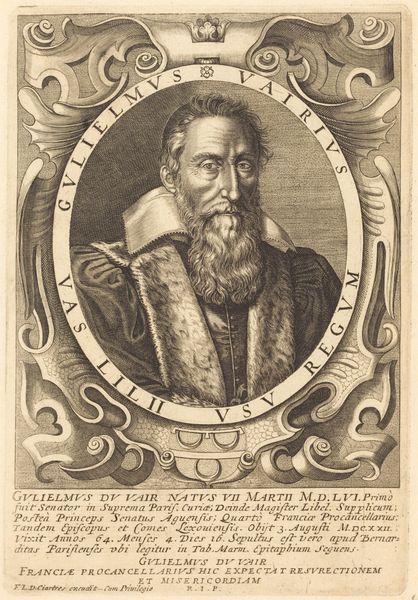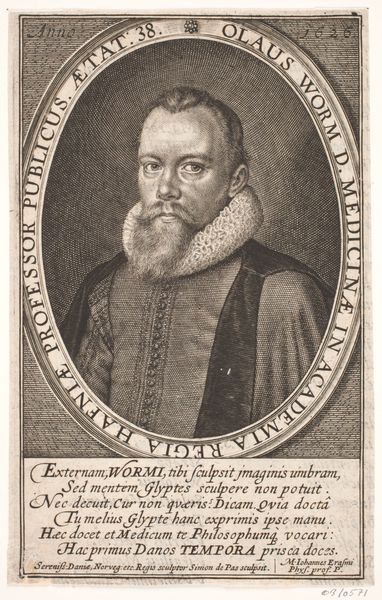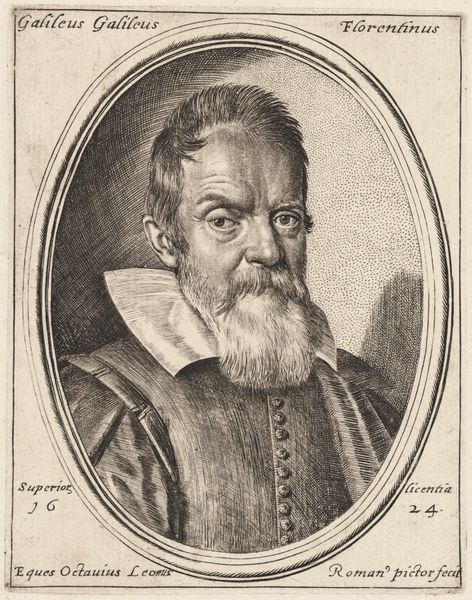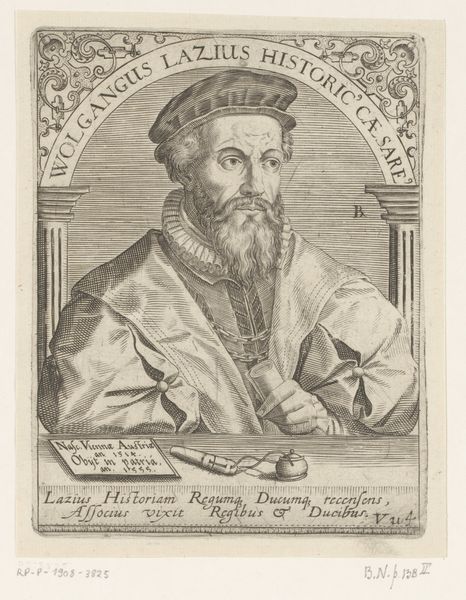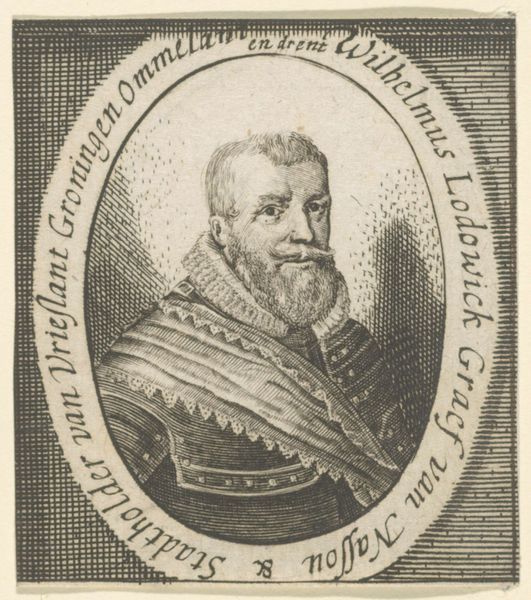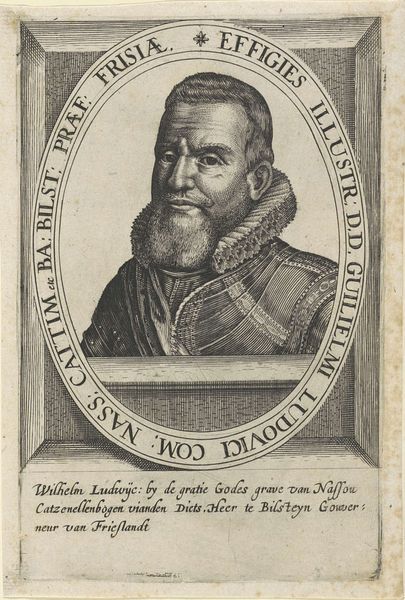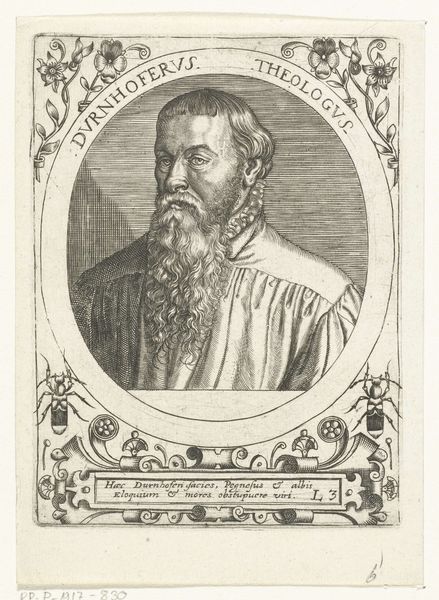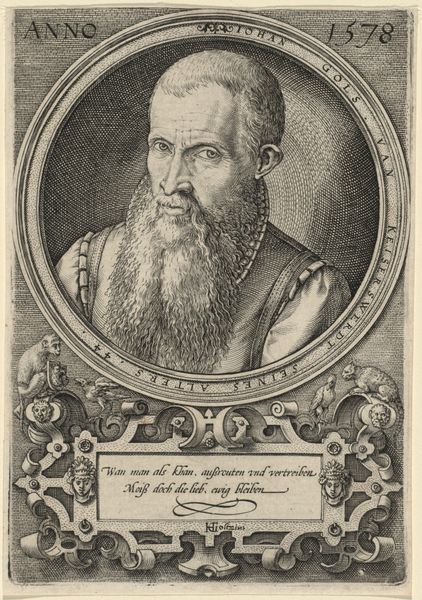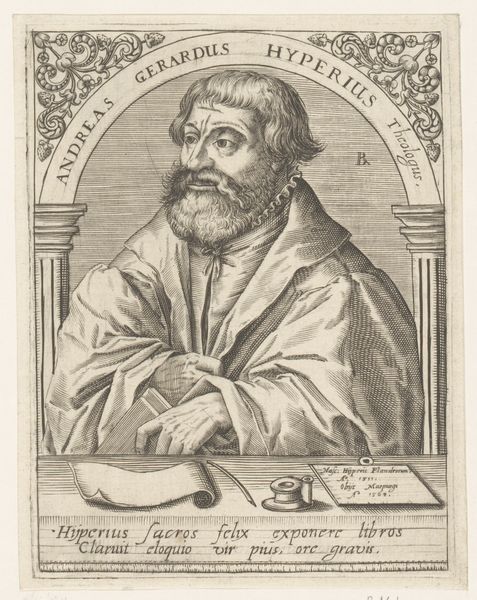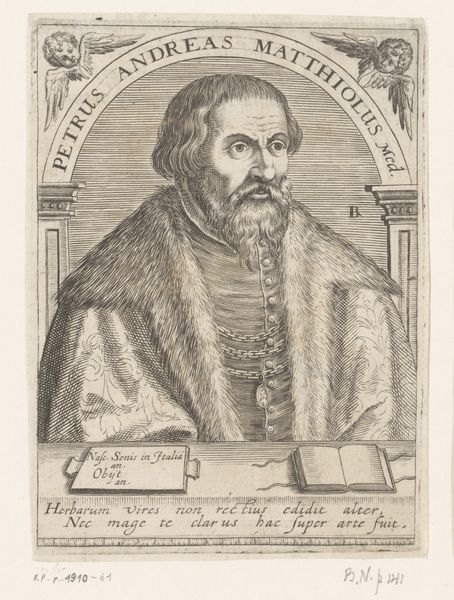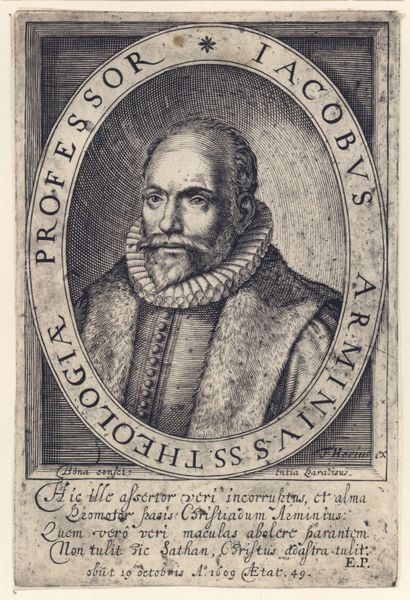
engraving
#
portrait
#
book
#
old engraving style
#
caricature
#
11_renaissance
#
portrait drawing
#
history-painting
#
northern-renaissance
#
engraving
Dimensions: height 137 mm, width 104 mm
Copyright: Rijks Museum: Open Domain
Curator: Here we have Robert Boissard’s "Portret van János Zsámboky," created between 1597 and 1599. This engraving, part of the Rijksmuseum's collection, offers a fascinating glimpse into the world of Renaissance intellectual portraiture. Editor: My first impression is one of severe intellect. The subject's intense gaze and the surrounding Latin text give the piece a powerful, scholarly mood, don't you think? There's a distinct air of gravitas here. Curator: Absolutely. János Zsámboky, also known as Sambucus, was a prominent Hungarian humanist, physician, and historian. Boissard's engraving serves as both a record of his likeness and a testament to his intellectual contributions. Note the inscription at the top: "IOANNES SAMBUCUS MED. ET HISTORIC.," identifying his roles as both a doctor and a historian. Editor: And the book! Such an obvious symbol of learnedness. I wonder about the decision to include the additional Latin text on the bottom, which feels quite didactic, like an extended caption celebrating his medical skills. I wonder if Boissard felt the need to emphasize Zsámboky’s significance for a specific audience? Curator: Possibly. In its era, printed portraits played a vital role in shaping reputations and circulating images of important figures, acting as a form of early public relations for the intelligentsia. These images provided a way to engage in broader cultural and intellectual dialogues, reinforcing the values and achievements of figures like Zsámboky. Editor: Considering that the artwork appears posthumously, as Zsámboky died in 1583, it is reasonable to question the political message underlying the commemoration of Zsámboky’s name in a way that emphasizes his knowledge as power and skill? I read this as a potential cultural preservation and power-narrative. Curator: It also connects to the Northern Renaissance’s keen interest in detailed realism and humanist values. The print exemplifies how art functioned as a tool for memorializing, celebrating, and, perhaps as you suggest, negotiating cultural and political identities. Editor: Well, reflecting on this artwork together really underlines for me how a seemingly straightforward portrait can be laden with historical context, acting as a window into the values and the power dynamics of its time. Curator: Indeed. It reminds us that art never exists in a vacuum; it is always a product and a reflection of its cultural moment.
Comments
No comments
Be the first to comment and join the conversation on the ultimate creative platform.

